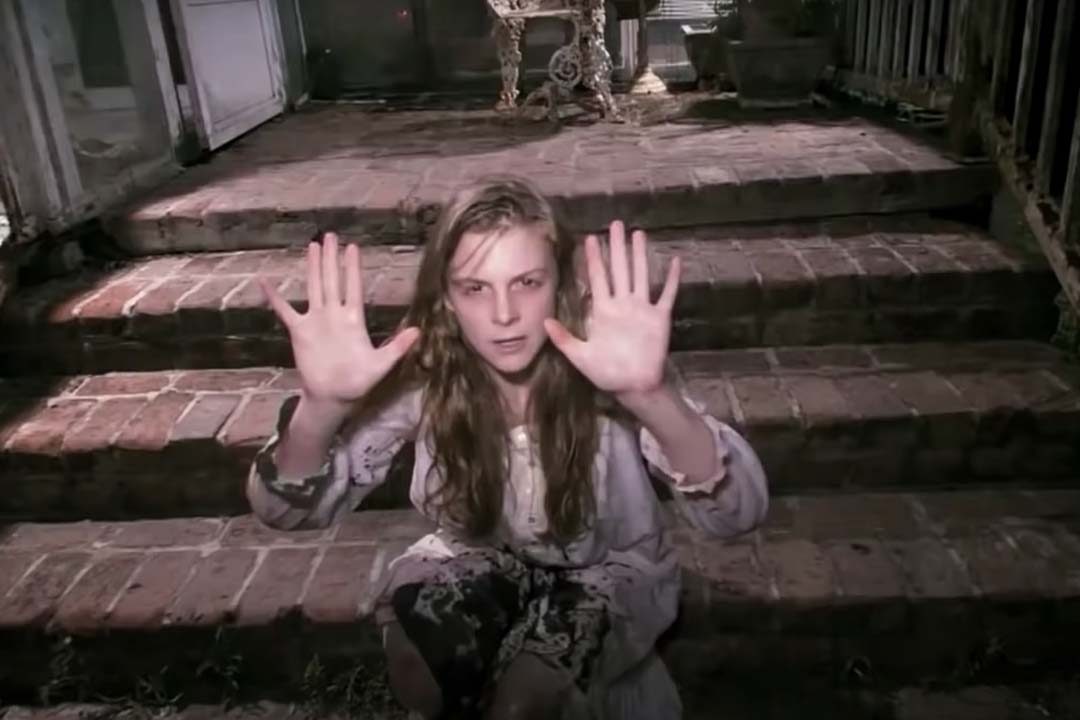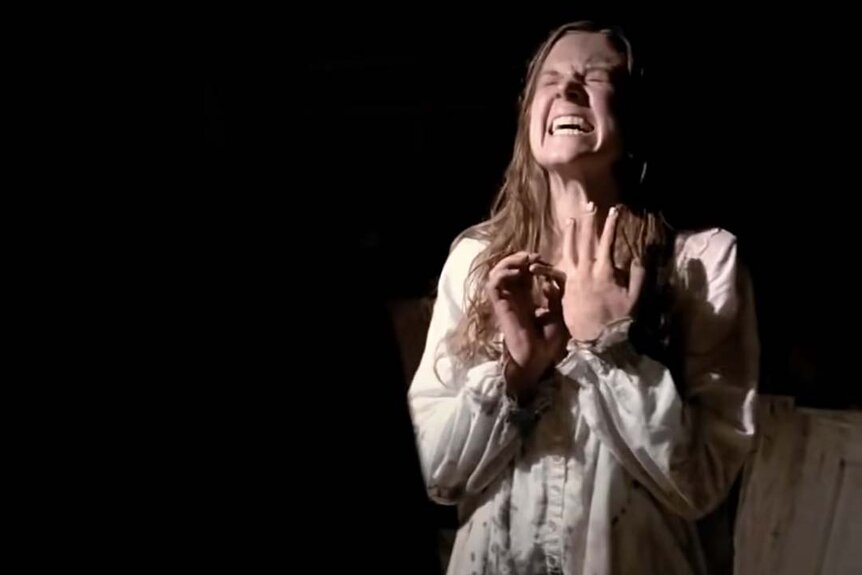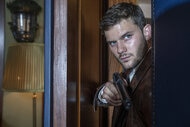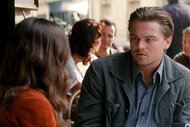Create a free profile to get unlimited access to exclusive videos, sweepstakes, and more!
The Last Exorcism Shot an Alternate Ending That Would've Reframed The Entire Movie
Reverend Cotton Marcus nearly pulled a fast one on the whole audience.

With 13 years between himself and The Last Exorcism, director Daniel Stamm can finally get something off his chest: "I f-cked up the ending."
This proverbial exorcising of the demons took place recently over Zoom, as SYFY WIRE questioned the filmmaker about his time spent making the 2010 found footage horror project (now streaming on Peacock). "The ending in the script was a different one," he continues. "I thought it was brilliant and it was the whole reason why I wanted to make the movie [in the first place]."
The Last Exorcism alternate ending explored
That original ending — which was actually filmed before Lionsgate scooped up the distribution rights and requested a different conclusion — would have reframed the entire movie as a clever marketing ploy by Louisiana huckster-reverend, Cotton Marcus (played by Patrick Fabian several years before his tenure as Howard Hamlin on AMC's Better Call Saul). After claiming that exorcisms are nothing more than a sham practice of smoke and mirrors, Cotton battles a seemingly bona fide agent of Hell during the Satanic birthing ritual in the theatrical cut.
RELATED: The Exorcist: Believer Does Not Feature Original Demon Pazuzu - So Which Demon Could It Be?
But rather than leave the character's fate ambiguous, the screenplay by Huck Botko and Andrew Gurland called for an epilogue in which Cotton "suddenly has thousands of followers around his church," Stamm reveals. "Everybody is trying to get into the church because he is the first one who caught a demon on camera. He is now the sensation in the evangelical movement. What we wanted to create was this feeling that you go like, ‘Wait a minute… are we just part of a big marketing video that this man pulled off?’"
"You see that you were conned through the whole movie," echoes David Birke, who did an uncredited pass on the script (he received permission from a WGA captain prior to speaking with us).
A good portion of the shoestring budget was spent on this alternate ending, which required pricey VFX work on the demon and the crowd surrounding Cotton's church. Stamm then screened the movie for a group of 10 friends — only one of whom understood what he was going for: a lingering uncertainty over whether or not the last 90 minutes could even be considered a horror film.
"One of them was like, ‘That is the most incredible ending I've ever seen in my life.’ And nine of them were like, ‘We have no idea what we just watched,'" he remembers. "I learned that you can ask the question and not answer it, but you have to be clear on the question. Because people were like, ‘Wait, are we supposed to wonder?’ It was just too confusing." Then Lionsgate came along and pretty much said the same thing: "The ending doesn't work."
According to Birke, the producers wanted to sell The Last Exorcism as "a real horror movie and not do any kind of deconstruction" of the genre. They were also hoping for the possibility of a sequel, necessitating that the movie be left "chillingly open-ended."
How The Last Exorcism pulled off its final scene in half a day
They needed a new ending, and they needed it fast. Like, you've-only-got-half-a-day-to-shoot-it fast. Birke floated the idea of one of the cultists picking up the camera for what he describes as "the Devil's home movies," where "you see this Rosemary's Baby stuff from the point-of-view of the Satanists filming themselves."
Unfortunately, his pitch never came to fruition due to budgetary and time constraints. "It was like opening a whole can of worms," he remarks. In the end, Stamm begrudgingly settled for the slightly "rushed" ending where Cotton marches off to save Nell Sweetzer (Carnage Park's Ashley Bell) from the newly-born entity, while the two members of his documentary crew try to escape and are horrifically slaughtered just out of frame.
Given the fact that they were short on both time and funds, Stamm and trusty cinematographer Zoltan Honti were unable to return to New Orleans and shot those final moments in the Los Angeles area. "It wasn’t the same crew, so we had to kind of re-teach everyone our style of what we were doing," Honti recalls. "No one one was 100% happy with what we were shooting and it was more [the sense] that we were seeking something better, but no one could come up with it."
An eleventh hour insert of several ominous drawings pinned to Nell's bedroom wall earlier in the runtime foreshadowed the demonic denouement, essentially confirming that Nell was under the influence of a supernatural force.
"It either works for people — and I'm always thankful when it does work for people — and for a lot of people, they go, ‘This movie is of one piece until the ending and then it's suddenly something else,'" Stamm says. "Which, of course, is totally true."
He continues: "I stand behind every single second of the movie until I come to the ending and I go, ‘Oh, I wish it was what we all thought it was gonna be,'" Stamm admits. "It's 90% of the movie we were making and 10% is us trying to somehow wrap it up in half a day."
While the theatrical ending does work on a thematic level (i.e. a preacher's waning faith is firmly restored), it went against the ideology Stamm employed from the very beginning. His overall goal was to set the project apart from that indefatigable exemplar of possession cinema: The Exorcist (that franchise will return October 6 with the release of David Gordon Green's The Exorcist: Believer).
"Our main line was basically, ‘We're not going to have our possessed girl do anything that gives away that she's possessed,'" the filmmaker explains. "Because the main story of the whole movie has to be, ‘Is she crazy? or is she possessed?’ And if she suddenly has her head spin and goes up on the ceiling, then you know she's possessed, and that's out the window. Whether that was successful is [up to the viewer], but to us, that gave us enough of a buffer to what made The Exorcist, The Exorcist."
RELATED: 'Cloverfield' turns 15: Matt Reeves looks back on found footage hit; confirms the monster's origin
To that end, the director brought on Birke to scale back the script's overtly paranormal moments. "[Daniel] said, ‘On one of these movies, you should have one — or maybe two — things that are the get of the century," the writer says. "'If you capture this, the documentary would receive wide distribution.' Then he went down the list and in the original script, there were like 25 things, where, if any one of them was in a documentary, it would be the get of the millennium. And so, it totally violated the whole pseudo-reality or verisimilitude of the documentary conceit. So from the beginning, it was about reorienting everything toward being more ambiguous."
Requiring a pass on the screenplay, however, was a somewhat superfluous action. According to Stamm, the actors never laid eyes on a single page of the script, and were constantly encouraged to improvise as much as possible. His aim was to avoid the "cinematic artifice" that comes from memorizing lines and actions. "It was always like, ‘Let's try this. This is your goal in the scene. This is the obstacle. Let's go.’"
"He must have talked them through it or done some kind of Svengali thing," Birke adds. "Because if you look at the script and you look at the movie, specific dialogue is there ... In some kind of genius, Werner Herzog-ian way, he fused being totally loose with the documentary realism with getting everything orchestrated that he wanted in all those shots."
Is there a sequel to The Last Exorcism?
There is indeed — it's called The Last Exorcism Part II. Released in March 2013, the follow-up boasted a screenplay written by the movie's director, Ed Gass-Donnelly (Small Town Murder Songs), and a pre-Whiplash Damien Chazelle.
Ditching the found footage shtick for a more traditional narrative format, the sequel follows Nell (once again played by Bell) as she attempts to lead a normal life following the traumatic events of the first film. "It was exactly the movie that we didn't want to make with the first one," Stamm emphasizes.
Eli Roth returned as a producer alongside Marc Abraham and Thomas A. Bliss. Louis Herthum (Westworld), meanwhile, reprised the role of Nell's father, Louis. Beyond those familiar faces, however, no one else was brought back into the fold. "I don't know why they didn't have Patrick in the sequel. That's madness to me," Stamm says. "Ashley and Patrick were that movie."
Nevertheless, the filmmaker does go on to concede that he found Part II to be "a very ballsy, very artsy movie" that was pleasantly surreal to take in as an outsider who had nothing to do with the project. "It was just an amazing feeling to watch a sequel to your own movie that you had nothing to do with," he finishes. "I wouldn’t miss it for the world."
The Last Exorcism is now streaming on Peacock.



























